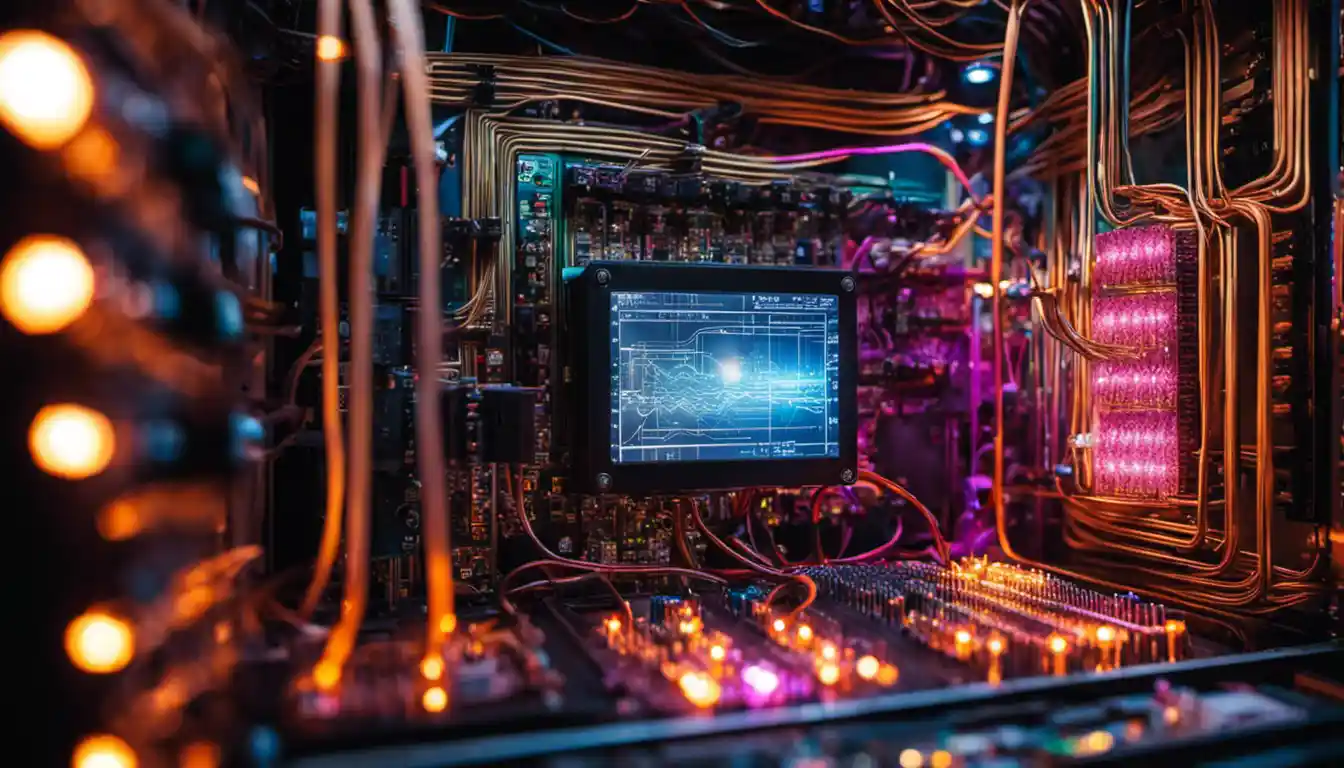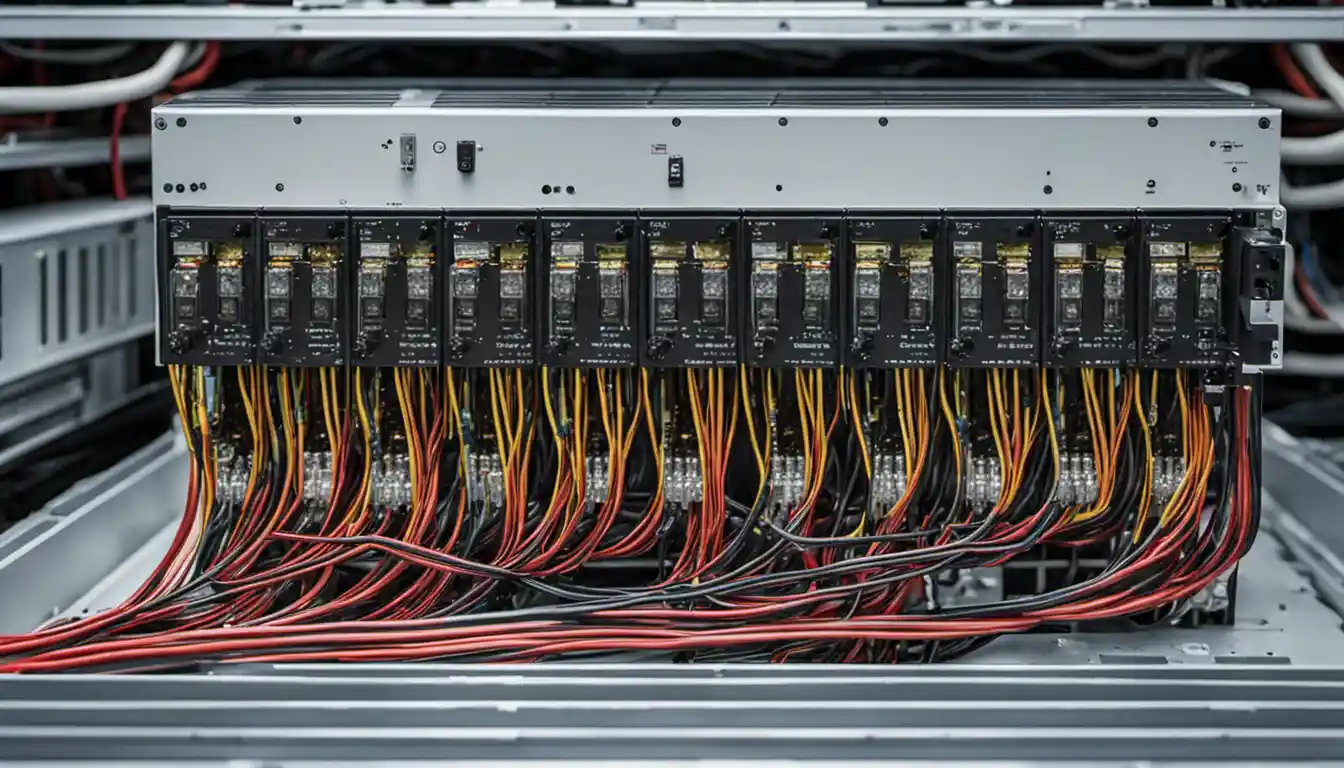Understanding Solar Power Inverters
To repair a solar inverter, first, you need to diagnose the problem, which is often indicated by the error code displayed on your inverter’s LCD screen. Once the issue is identified, refer to the inverter’s manual or consult the manufacturer’s technical support. In most cases, complex issues cannot be self-repaired and it’s advised to contact a licensed professional to avoid voiding your warranty or causing further damages.
Role and Importance of Solar Inverters
When it comes to solar energy production, the solar power inverter is the heart of the system. It’s the device that takes the DC (Direct Current) power generated by your solar panels and converts it into AC (Alternating Current) power that your household appliances can use. Essentially, without a solar inverter, the sunlight captured by your solar panels remains unutilized, which brings us to the importance of understanding how to repair solar inverters.
Different Types of Solar Inverters
There’s a variety of inverters available today, and it’s crucial to understand the type of inverter you own to successfully diagnose and repair any issues. The three main types of solar inverters are string inverters, micro-inverters, and power optimizers. Each type operates differently and thus can require different repair steps. For instance, a string inverter, the most common type among residential solar systems, may display different error codes compared to the advanced micro-inverters.
Potential Causes of Solar Inverter Problems
Overheating of the Solar Inverter
Overheating is a frequent cause of solar inverter issues, and one I’ve often encountered in my 20 years of experience in solar energy. Your inverter may overheat due to an excess of sunlight, dust accumulation, or restricted airflow, resulting in reduced efficiency or complete shutdown.
Incorrect Installation of the Solar Inverter
Incorrect installation ranks high among the reasons why you might need to learn how to fix a solar inverter. An inverter wrongly connected or mounted at an incorrect location (for instance, facing the sun directly or in a cramped, poorly ventilated space) can lead to functional hiccups.
Inverter Isolation Faults
An isolation fault may occur when an electrical fault near the inverter causes a leak of DC voltage to ground, causing the inverter to disconnect from the grid. This issue typically requires a professional’s intervention to identify and rectify the root cause.
Problems with Maximum Power Point Tracking
Some inverters come with Maximum Power Point Tracking (MPPT), designed to extract the maximum power from your solar panels under varying conditions. Issues with MPPT can result in your system operating below peak efficiency, meaning lower solar energy output.
Issues with Solar Power Inverter Restarting

Inverter restarting issues can stem from various causes, either internal, such as a faulty component, or external, like a power grid issue—the good news is, most of these can be sorted out by following the manufacturer’s troubleshooting guide.
Identifying When Your Solar Inverter Needs Repair
Warning Signs to Watch Out For
Spotting early warning signs can spare you both time and money. Diminishes in your system’s power output, frequent error messages, excess heat, or strange noises—all signal that something’s off.
Error Codes and What They Indicate
Every inverter model has its own set of error codes that help diagnose potential problems. It’s advisable to familiarize yourself with your inverter’s error codes and what they mean—a step that maps your path on how to repair a solar inverter.
Importance of Regularly Checking Your Inverter
The best defense is a good offense, they say, and it holds true for solar inverters. Regularly checking your inverter, ideally once a month, can help you spot issues early before they escalate.
Head over to our comprehensive guide on solar inverter maintenance for helpful tips on keeping your solar inverter functional.
Preventive Measures and Maintenance Tips
Keeping the Inverter Cool
Ensuring good ventilation around your inverter can prevent overheating. If mounted outside, consider providing a shade to protect it from direct sun exposure. If indoors, a well-ventilated, dust-free area is apt.
Keeping the Air Intake Filter Clean
Check and clean your inverter’s air intake filter regularly. A congested filter can hamper airflow and lead to overheating.
Using Solar Monitoring Technology
Monitoring technology lets you track your solar system’s performance, alerting you of any potential issues. Investing in one might save you a significant amount in the long run.
When and How Often Should the Solar Inverter be Inspected

Professional inspection of your solar inverter is recommended annually. In between, monthly checks should suffice. Stay aware of your system’s performance and be vigilant about unexpected changes.
Step-By-Step Guide to Troubleshooting and Repairing Common Solar Inverter Faults
Repairing a solar inverter can be complex, and while this guide provides a broad idea on how to repair a solar inverter, the specifics can vary widely. Always refer to your inverter’s manual or consult a solar professional to ensure safe and successful repairs.
Solutions for Overcurrent, Undervoltage, Islanding, Overheating, and Communication Errors
These are among the most common issues you may encounter. Depending on the specific model and make of your inverter, consider professional advice on tackling these problems.
Necessity of Professional Assistance in Certain Cases
While we’re all for DIY, some issues are best left to professionals. If your inverter is under warranty or the repair involves complex troubleshooting, enlist a solar professional’s help.
Considerations When Repairing a Solar Inverter
Can a Solar Inverter be Repaired Independently
Some minor issues, like restarting errors or basic error codes, can often be sorted out by yourself. But for larger problems, consult a solar professional.
When to Contact the Solar Installation Company
If your system is newly installed and showing faults, it’s best to contact the installation company. You may still be covered under their service or installation warranty.
When to Contact the Solar Inverter Manufacturer
Under a manufacturer’s defect or warranty issue, the manufacturer should be your first point of contact. They can provide you with specific repair instructions or offer replacement under warranty.
When to Contact a Trusted Solar Company
If your inverter is out of warranty and the issue extends beyond a simple repair, it’s time to call a trusted local solar company.
Choosing the Right Service Provider for Solar Inverter Repairs

Criteria for Residential Solar Customers
When choosing a solar inverter repair service, consider their reputation, experience, warranty offerings, and service costs.
Criteria for Commercial Solar Customers
Commercial solar customers should also weigh the company’s track record with large-scale solar installations and any specialized services they offer for commercial setups.
Criteria for Asset Management Companies
Asset Management Companies should rely on a provider that offers regular maintenance and has a portfolio demonstrating expertise in handling solar parks or large-scale installations.
Possible Alternatives to Repairing a Solar Inverter
Validity of Warranty and its Applicability
Check your warranty before you embark upon figuring out how to fix your solar inverter. If you’re under warranty, relay your problem to your manufacturer—they’ll either fix or replace at little to no cost.
When Does a Solar Inverter Need to be Replaced
Extreme conditions or a simple course of time may lead to irreparable damages in your inverter. If that’s the case, it’s likely more cost-effective to replace your solar inverter.
Deciding Between Repair and Replacement
It’s crucial to weigh your repair costs against the cost of a new inverter. A cheap fix today may lead to a costly breakdown tomorrow—sometimes a replacement is a more economical choice.
Conclusion
Learning how to repair a solar inverter may seem daunting, but it’s part and parcel of owning a solar energy system. Whether you choose to DIY or hire a professional, just remember: a well-maintained solar inverter translates into efficient energy production and greater savings on your energy bills. So venture forth, and may the sun power you on!



